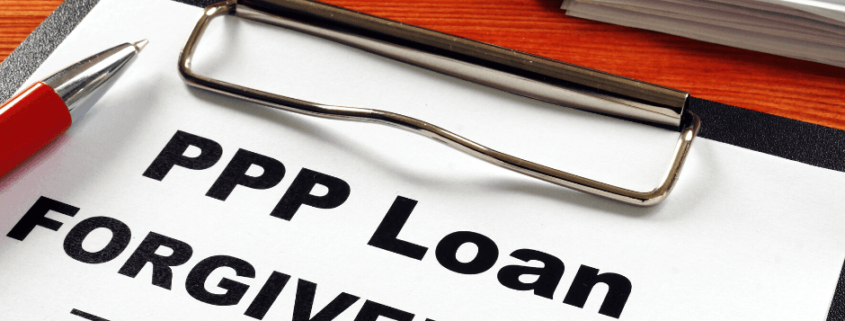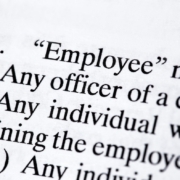Your PPP Loan Forgiveness Will Probably be Less Than Anticipated
- Learn the basics of the Paycheck Protection Program.
- Find out the loan terms of the PPP.
- Learn how to calculate a PPP loan amount.
- Learn more about loan forgiveness.
- Find out how a reduction in pay affects loan forgiveness.
- Find out how a decrease in employees affects loan forgiveness.
- Discover other qualified expenses and limitations to expenses.
- Find out the necessary documentation for loan forgiveness.
Congratulations! You’ve received a Paycheck Protection Program loan (PPP)! Now, you need to start planning how to spend the PPP loan proceeds with loan forgiveness in mind. And Fiducial can help!
As the loan title implies, the purpose of the loans is to enable employers to keep their employees on staff. Businesses should also maintain normal rates of pay during the 8-week period immediately following the funding of the loan. The term of a PPP loan is 2 years at an interest rate of 1%. You must repay any portion of the loan not forgiven at the end of the 2-year period.
Calculating your PPP loan amount
When you applied for the PPP loan, you provided documentation to verify your average monthly payroll. This average applied to the 12-month period preceding your application. However, for calculation purposes, each employee’s payroll for a year had to be limited to a maximum of $100,000. If your company did not conduct business and pay employees by February 15, 2019, it was considered a “new” business.
The Treasury based the average monthly payroll upon the average payroll for January and February 2020. The Treasury uses other special testing periods for seasonal businesses.
Since self-employed workers are not included on payroll, the amount a self-employed person includes in the average monthly payroll computation is 1/12 of the business’s net profits (subject to the same $100,000 limit that is applied to an employee’s annual compensation).
Regardless of how your business determines average payroll, the Treasury bases the PPP loan amount on 2.5 times the average monthly payroll as determined by one of these methods.
Example: Assume you do not have a new or seasonal business and you applied for the loan on May 1, 2020. You would have added up your company’s payroll for the prior 12 months, May 2019 through April 2020 (subject to the $100,000 limit per employee), and then divided the sum by 12. Assuming the result totaled $80,000, you would have qualified for a PPPL of $200,000 (2.5 x $80,000) at 1% interest. The entire loan is due and payable in 2 years.
PPP Loan forgiveness
If businesses use PPP loans to keep workers employed during the 8 weeks following the funding of the loan, they may qualify for partial forgiveness. Your awareness of how the Treasury determines forgiveness may have a huge impact. In this way you can maximize loan forgiveness for your particular circumstances. It may seem simple at first glance, but you must consider all of the small, moving parts built into the loan forgiveness computation. These details may reduce the forgiveness.
- Reduction of Pay– You must determine any reduction in pay that is in excess of 25% on an employee-by-employee basis. These reductions in excess of the 25% will reduce the forgiveness amount dollar for dollar. No reduction in pay occurs for an employee whose reduction goes back to normal by June 30, 2020.
- Decrease in Employees– Where the average number of employees has been reduced during the 8-week period as compared to a prior testing period, the PPP loan forgiveness is proportionally reduced. For example, if you had an average of 10 employees during the testing period and an average of 9 during the 8-week period, then the forgiveness will be reduced by 10%. You will be able to choose either January 15 to June 30, 2019 or January 1 to February 29, 2020 as your testing period.
- Limitation of Expenses Other than Payroll– Lawmakers primarily intended these loans to maintain payroll. However, other qualified uses include rent, lease, business interest and utility payments in force before February 15, 2020. However, the SBA limits these expenses to 25% of the forgiven debt.

Complications of loan forgiveness
Other factors may complicate the determination of the forgiveness as well.
Determining a loan’s forgiveness starts with the sum of the payroll and expenses for the 8-week period and then is reduced for each of the items above. As you can see, it is not as simple as some would have you believe. And, unfortunately, forgiveness is not automatic.
When applying for these loans, borrowers made a good faith certification of their need for the loan. Originally, the Treasury had indicated that an audit would take place for every loan certification. However, the Treasury has since come up with an “economic uncertainty” safe harbor for loans of less than $2 Million, under which the borrowers of these loans will be considered as having made the required certification concerning the necessity of the loan request in good faith.
For loans of $2 million or more, the Treasury Department is giving businesses until May 18, 2020 to return the funds. If they do so, they avoid an audit concerning the good faith certification. For the businesses that return the funds by May 18, the Treasury will not pursue administrative enforcement or make referrals to other agencies.
In addition, in an audit, where the Treasury finds that the borrower’s certification lacked an adequate basis for the necessity of the loan, the Treasury will not pursue administrative enforcement if the borrower returns the funds after notification by the SBA.
Borrowers that do return the loan proceeds will be eligible for the employee retention credit.
Need help with your PPP loan?
Fiducial can assist you in planning your expenditures to maximize your loan forgiveness based upon government guidelines. Call Fiducial at 1-866-FIDUCIAL or make an appointment at one of our office locations. Ready to book an appointment now? Click here. Know someone who might need our services? We love referrals!
For more small business COVID-19 resources, visit Fiducial’s Coronavirus Update Center to find information on SBA loans, tax updates, the Paycheck Protection Program, paid sick and family leave, and more.









